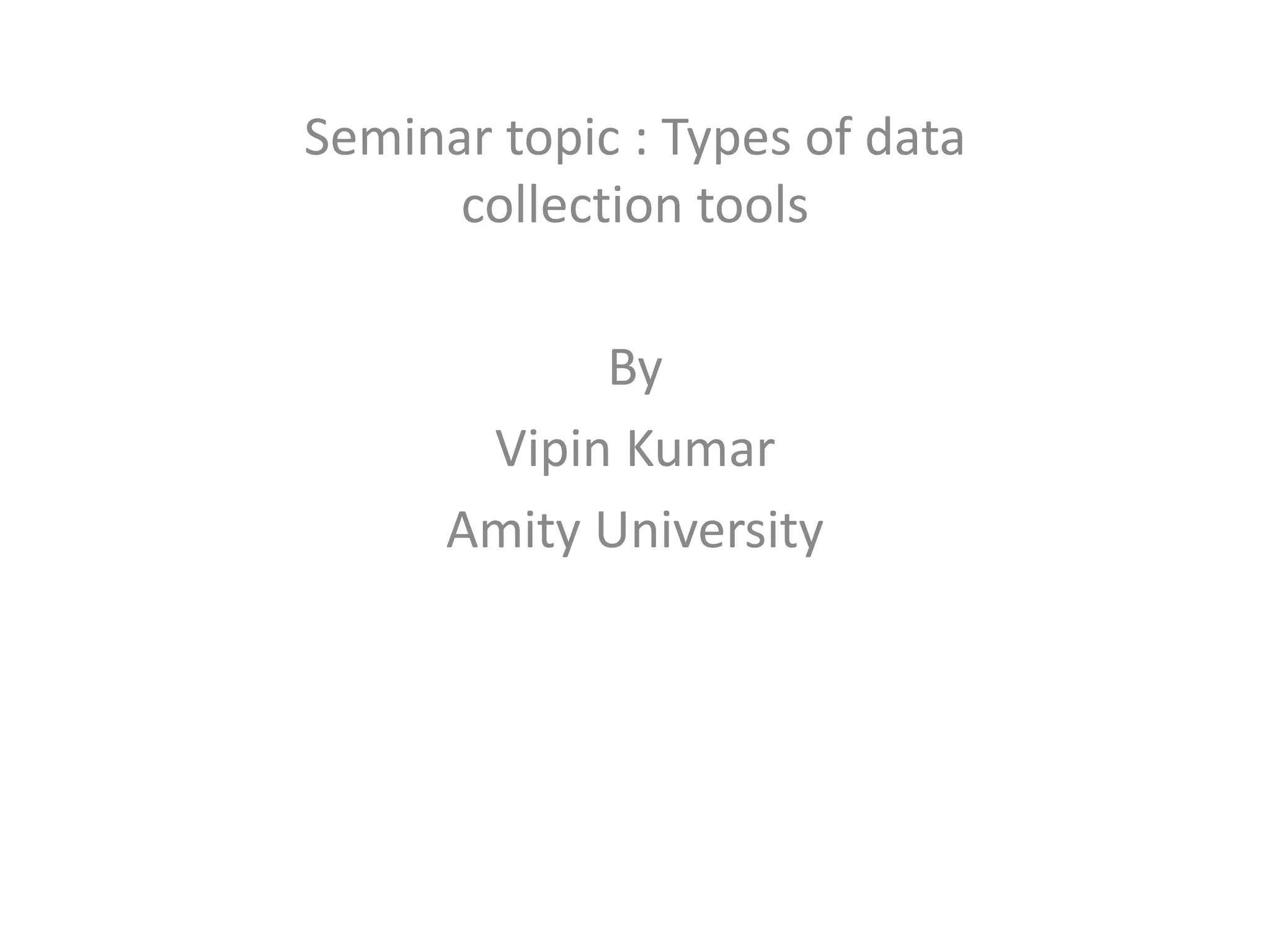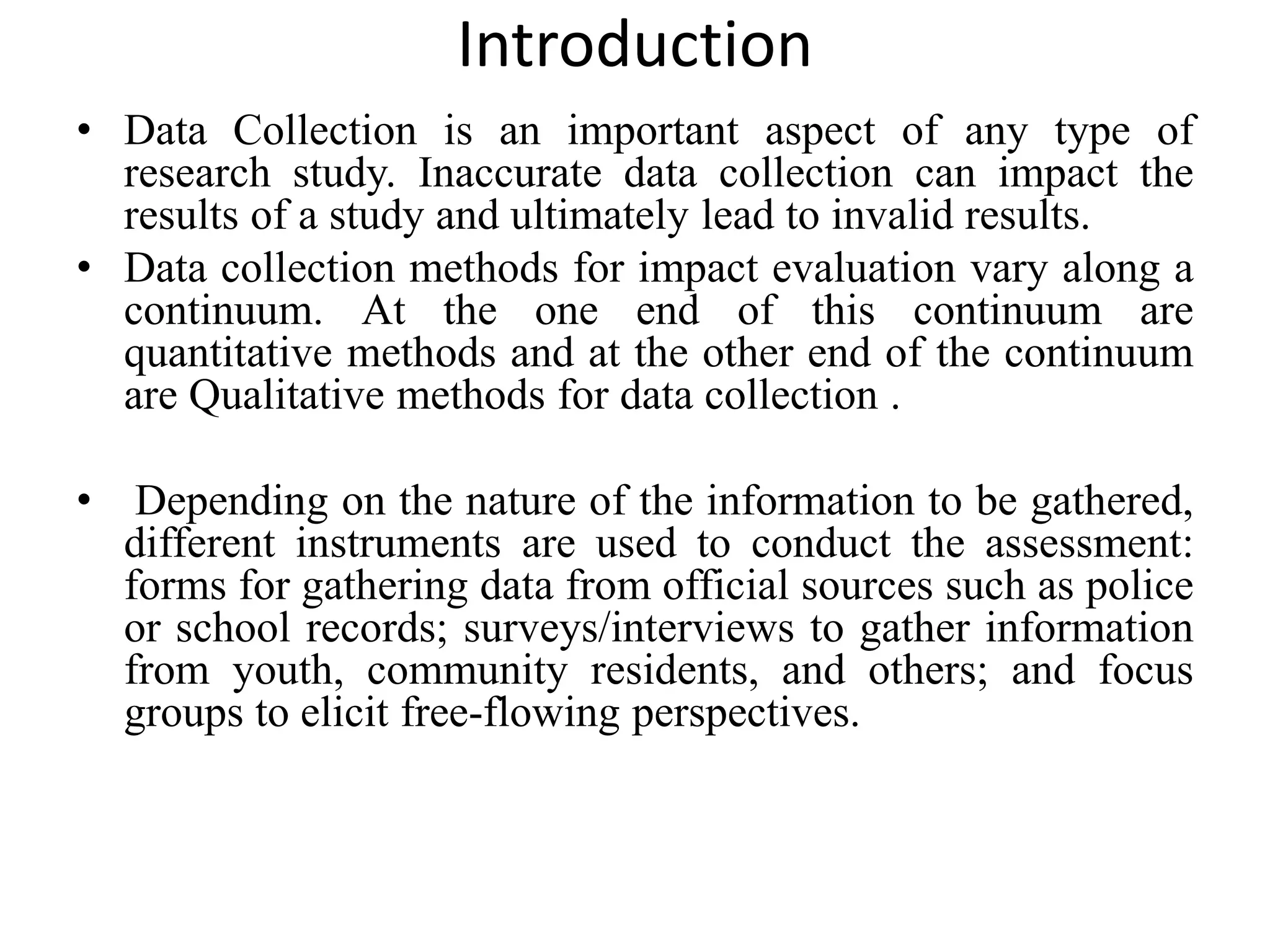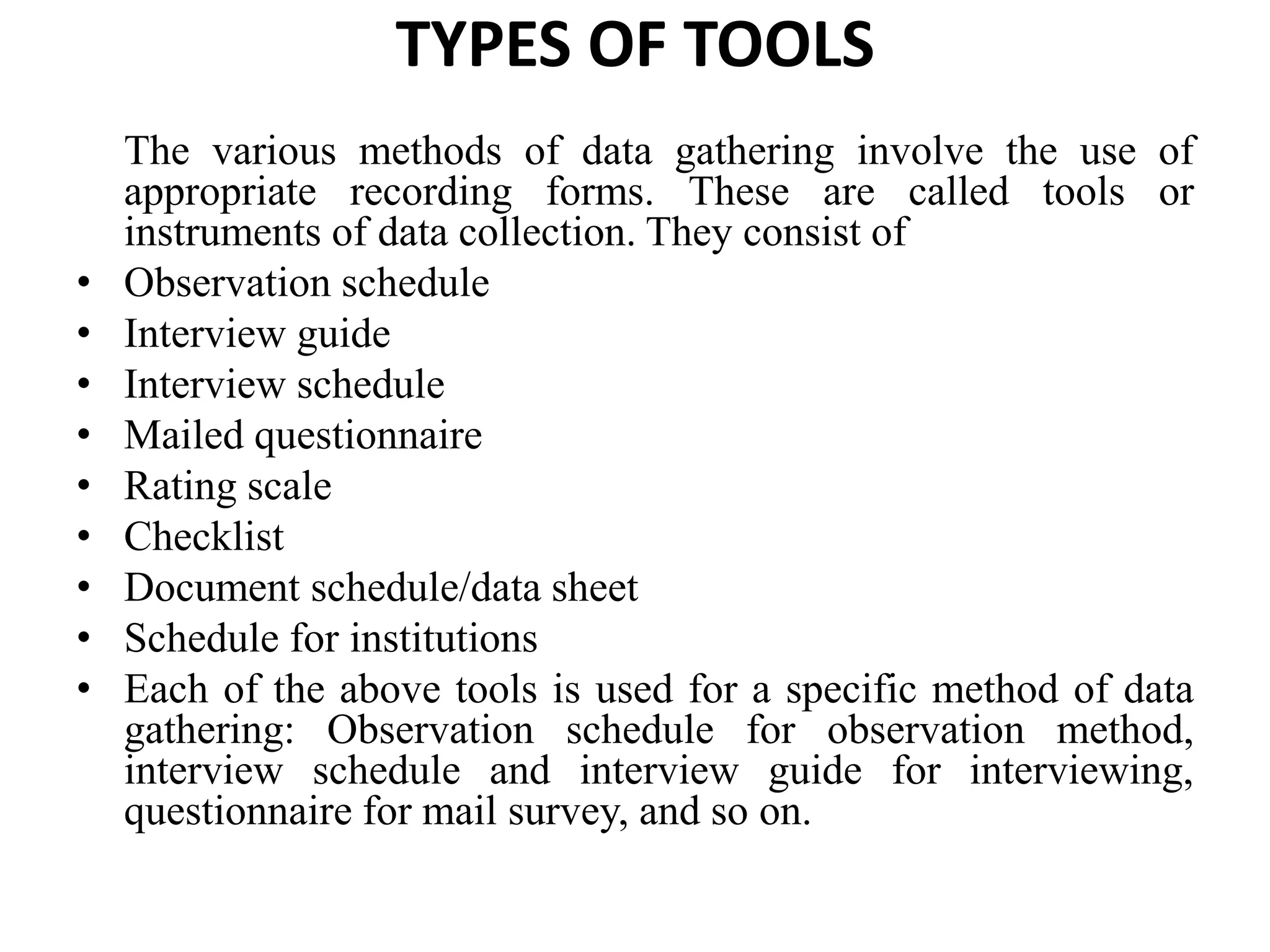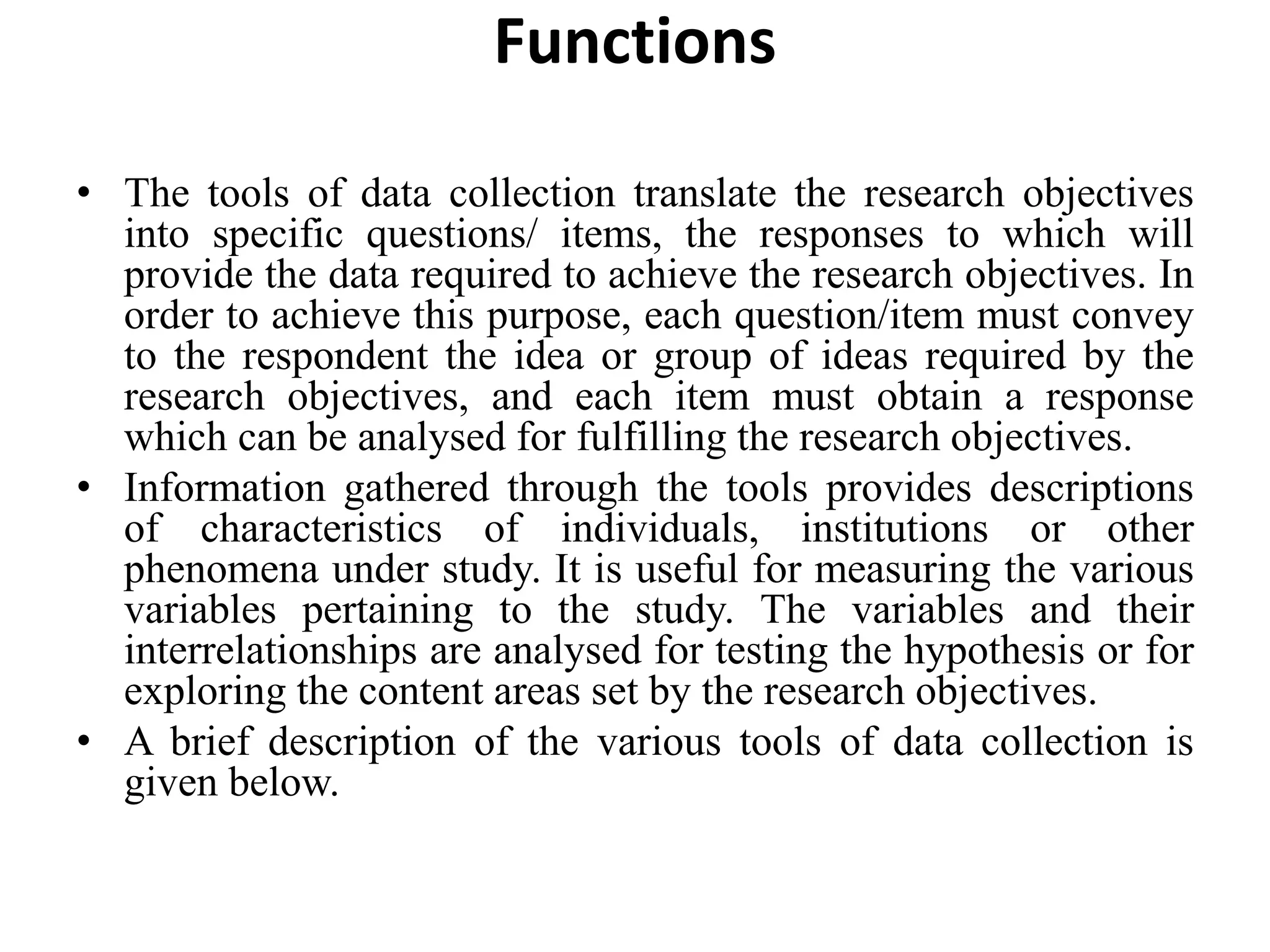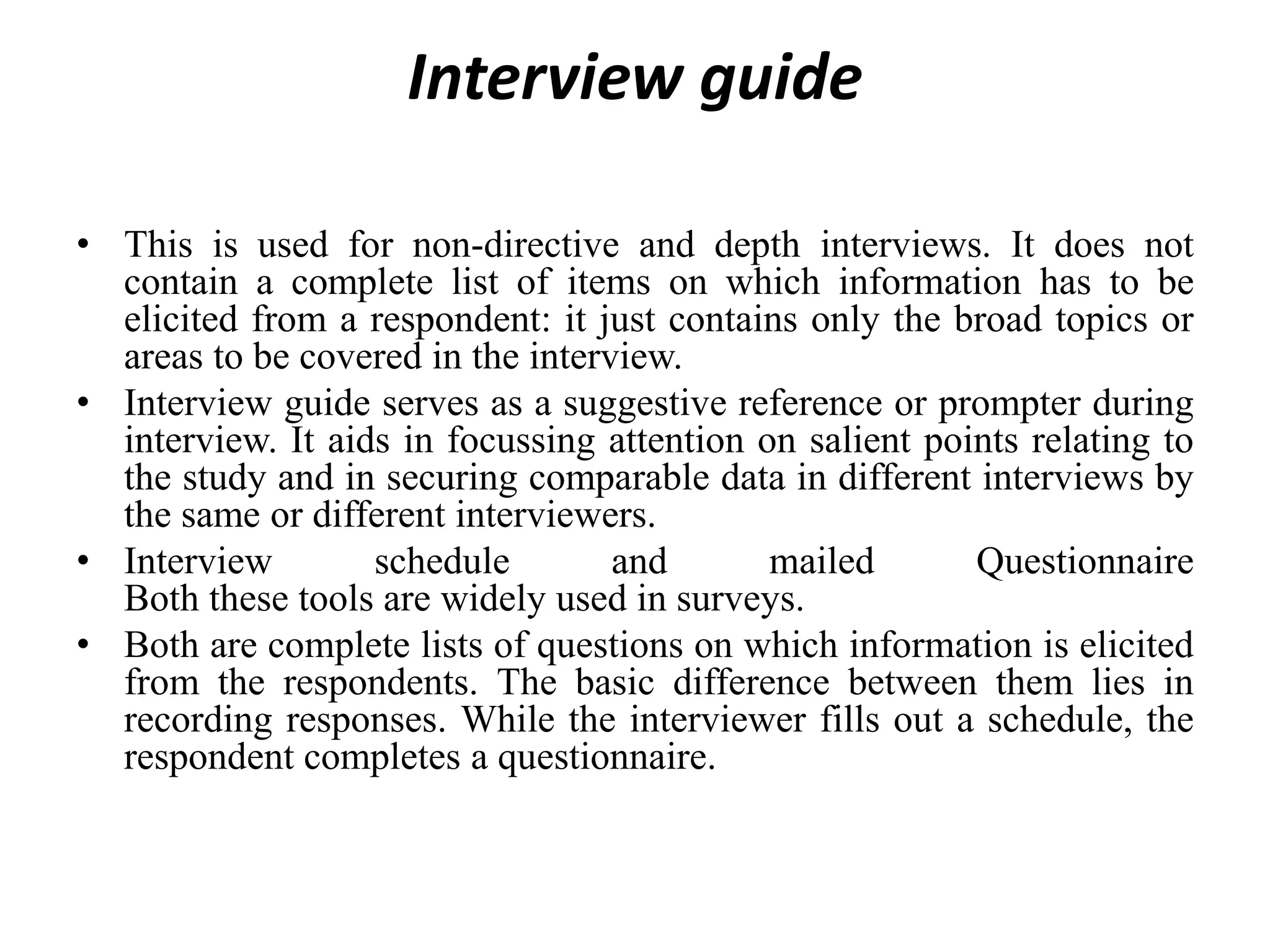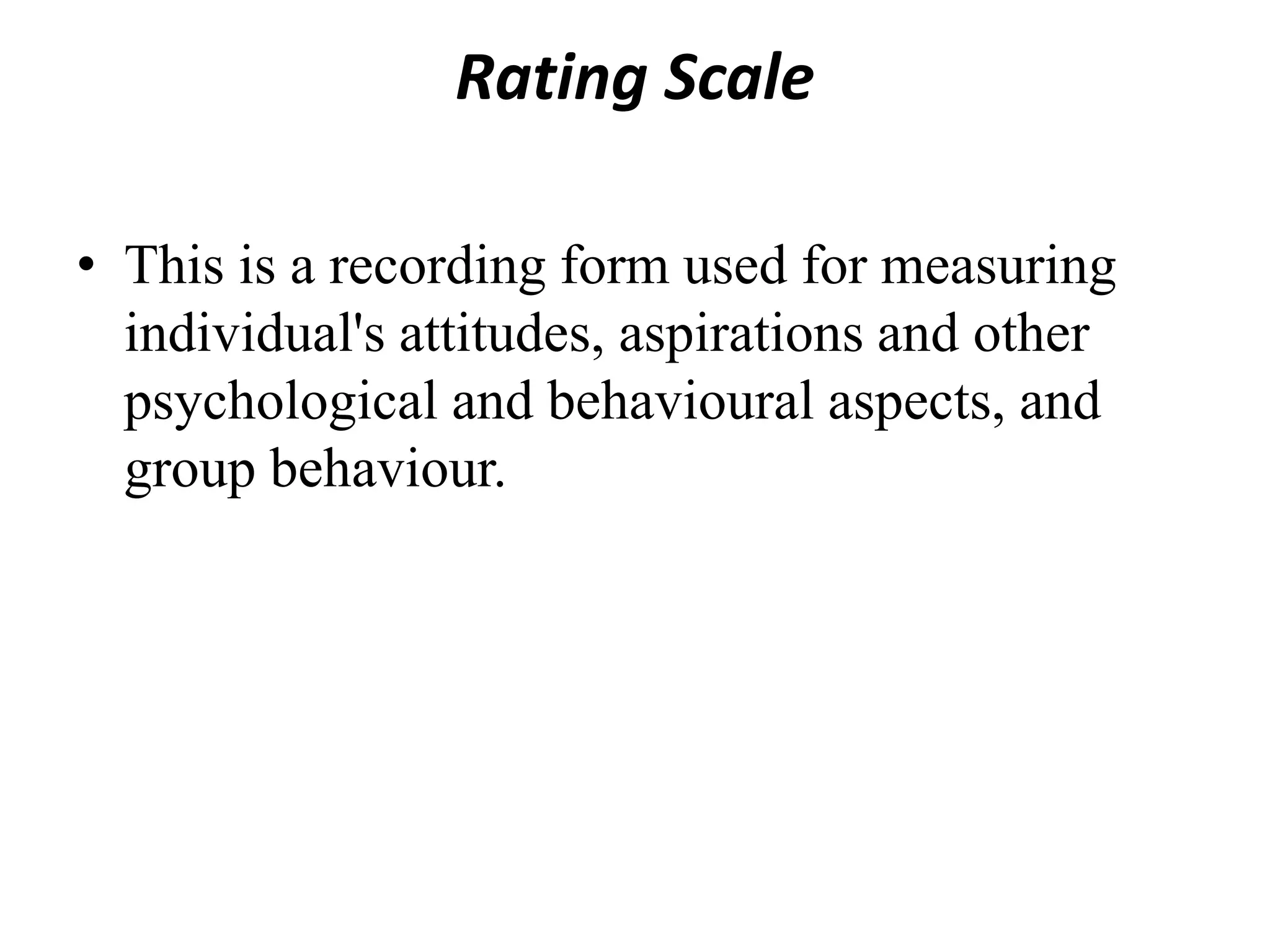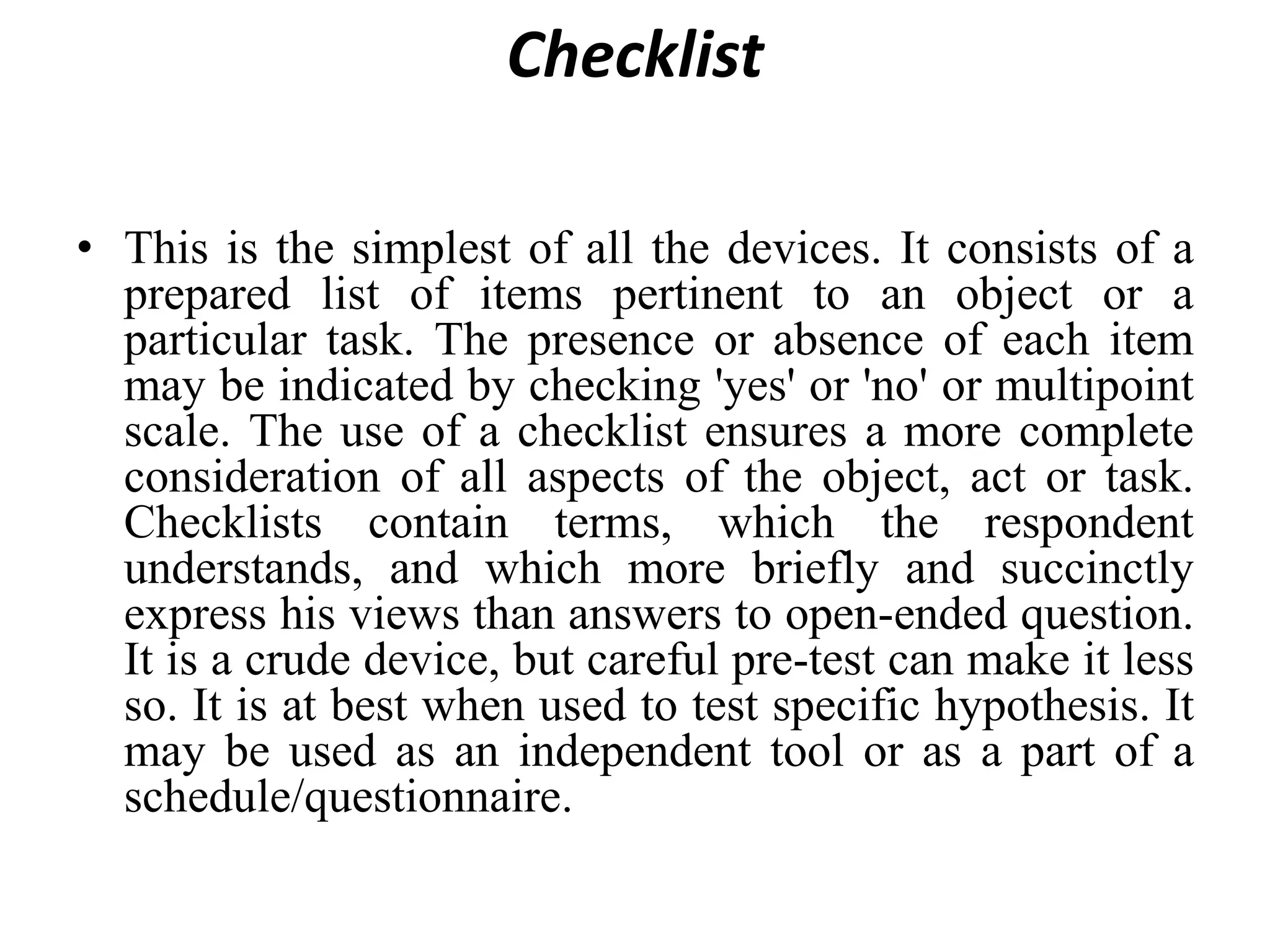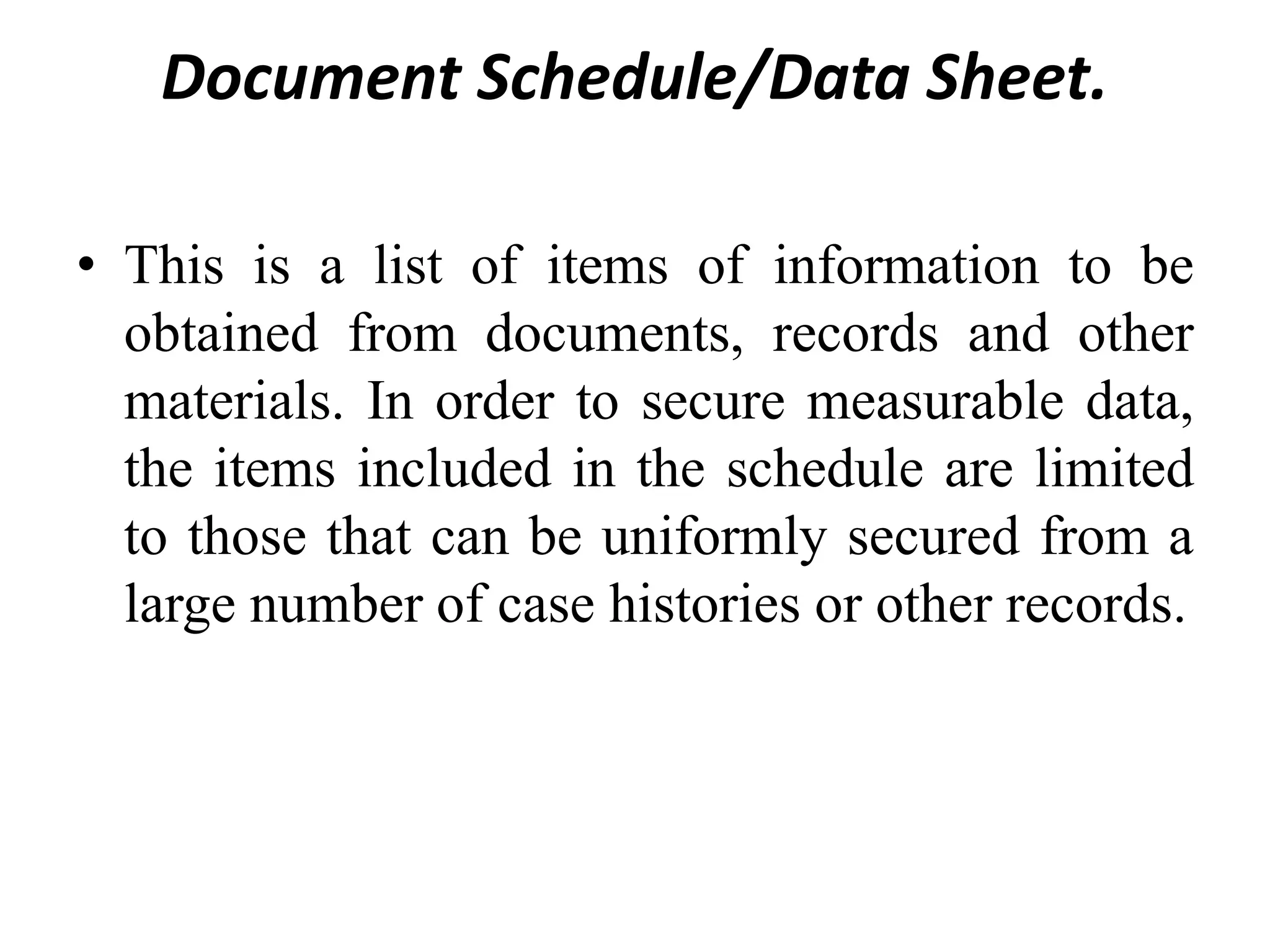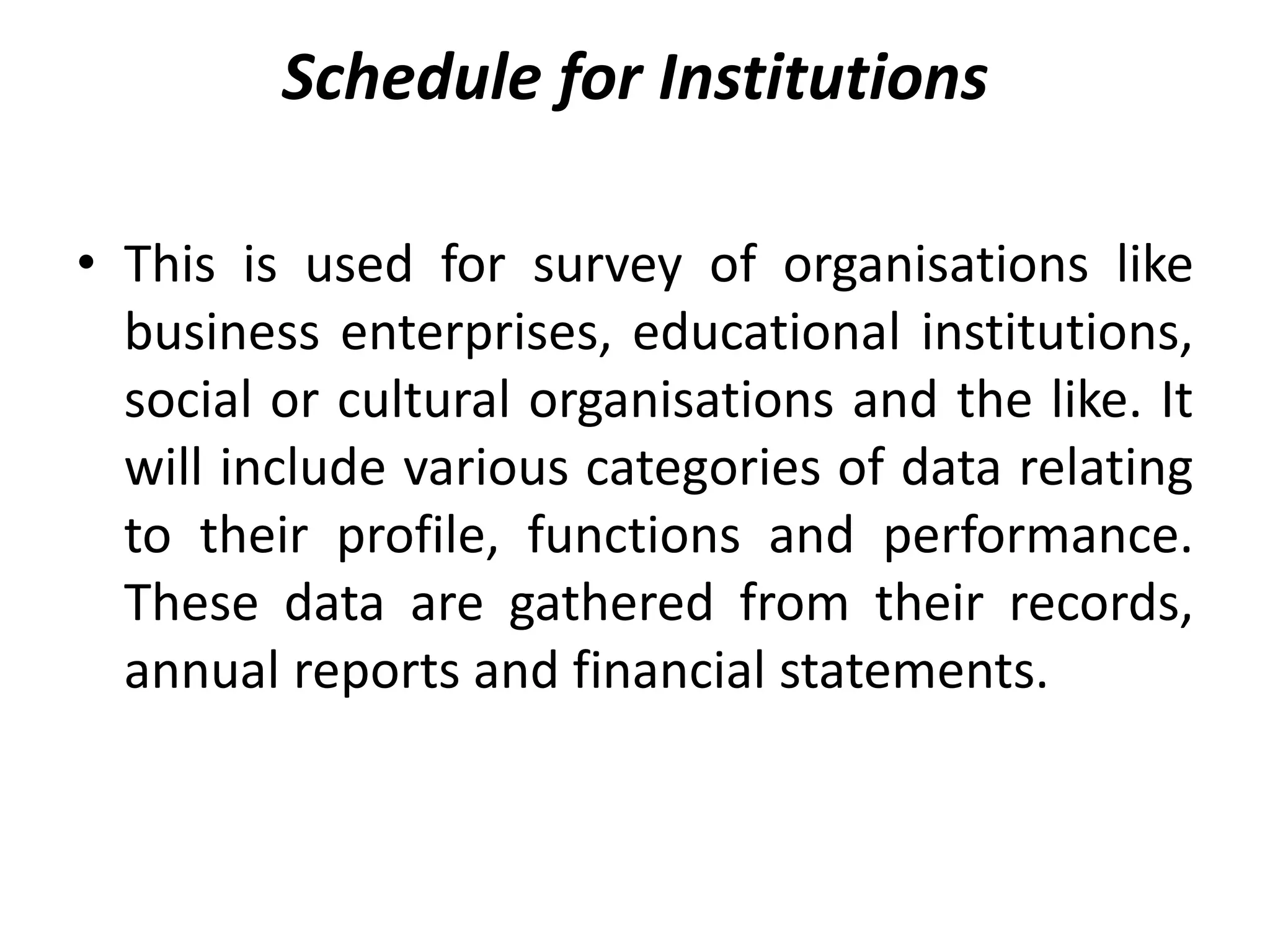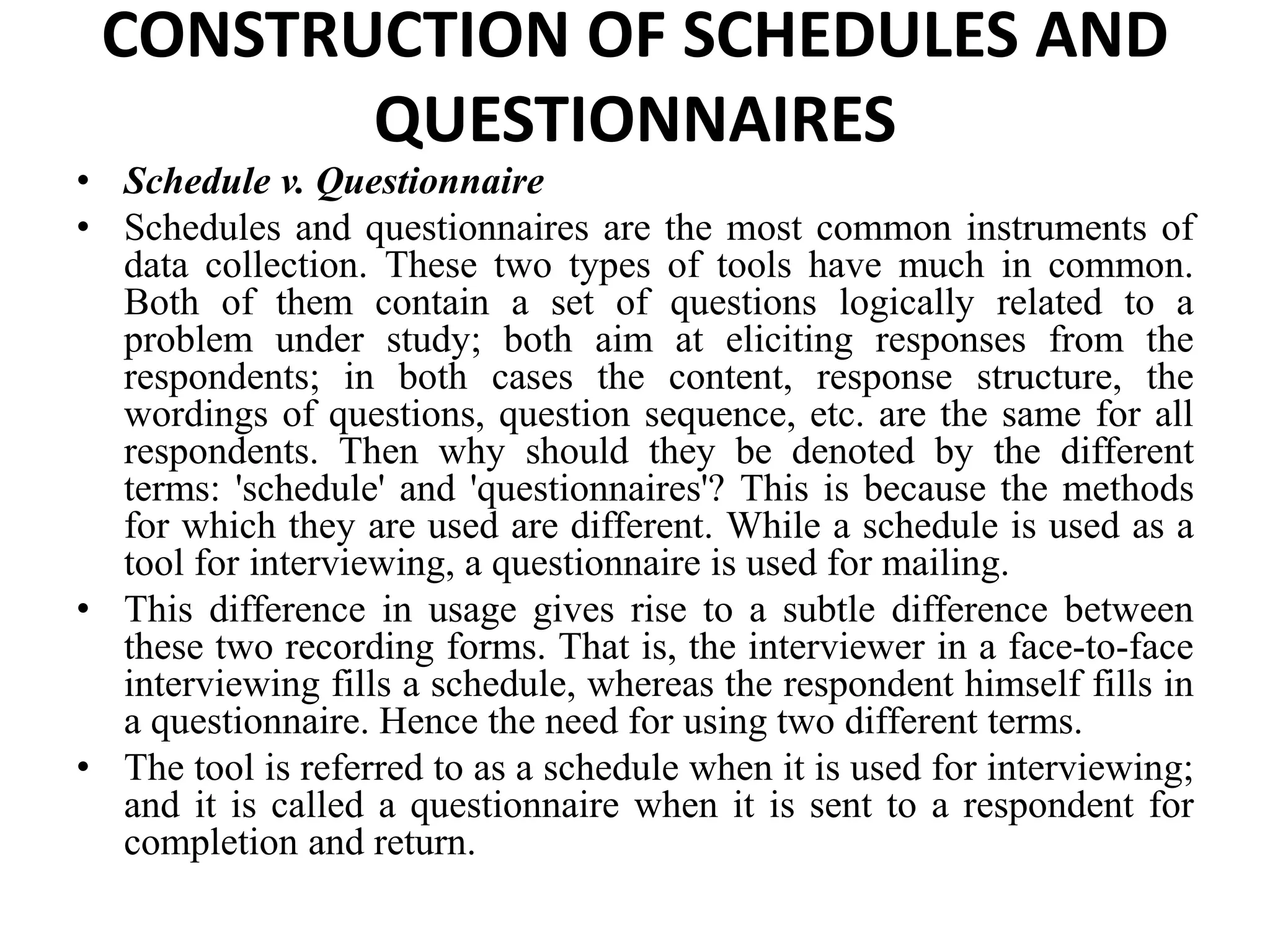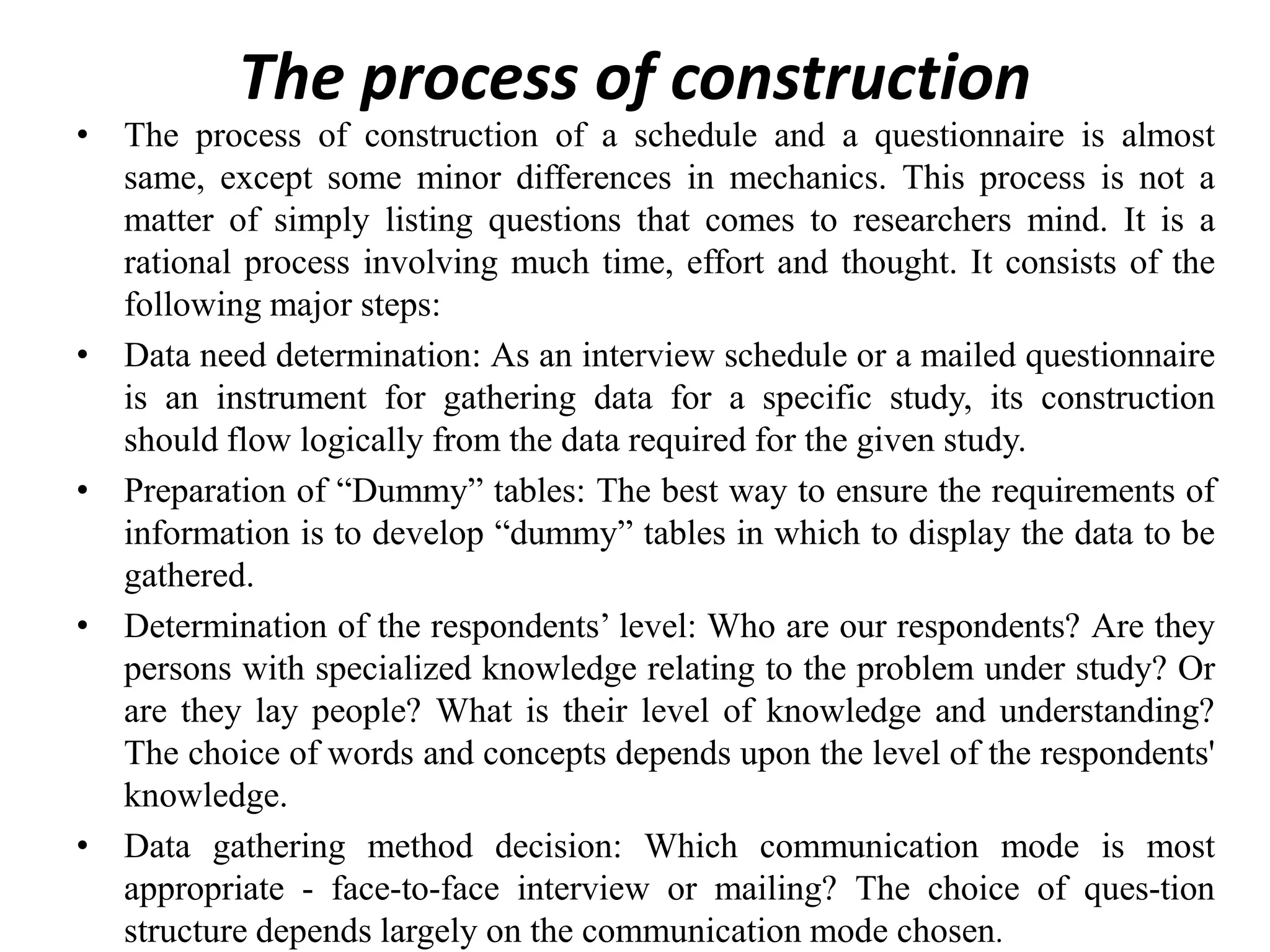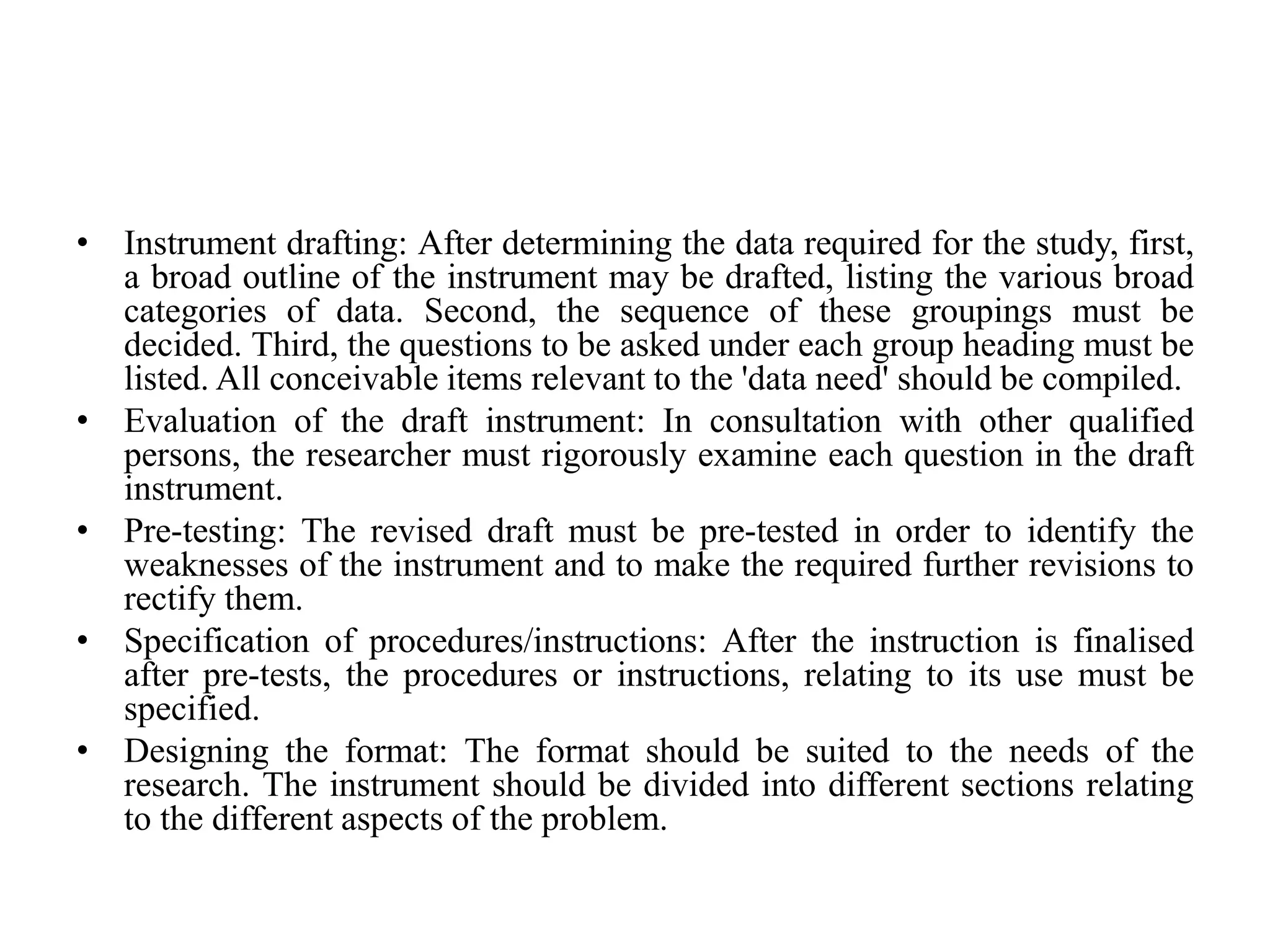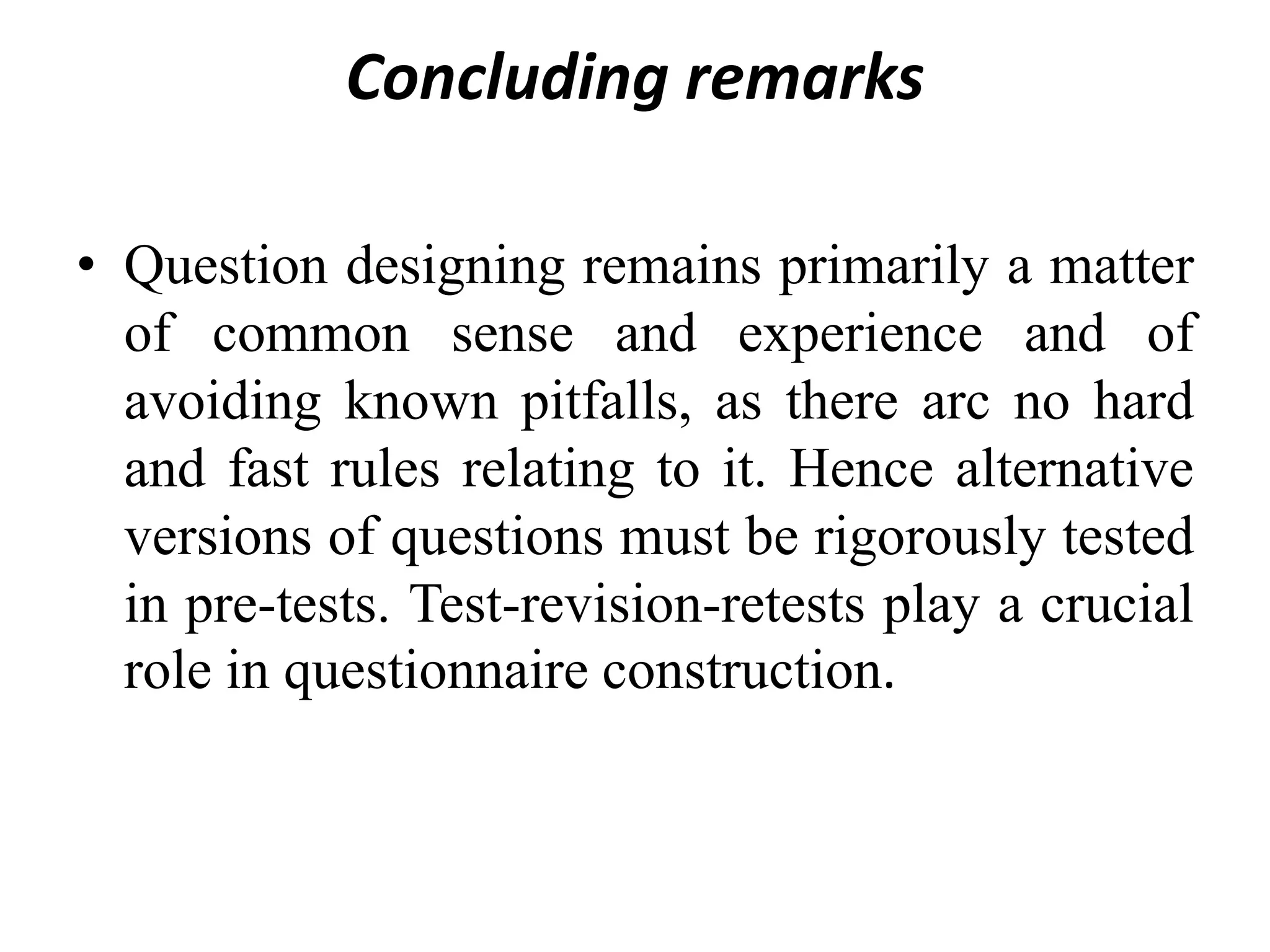This document discusses various tools used for data collection, including observation schedules, interview guides, questionnaires, rating scales, checklists, and document schedules. It describes the purpose and construction of each tool. Key tools include observation schedules for recording observations, interview guides for open-ended interviews, questionnaires for surveys, and rating scales for measuring attitudes. Proper construction of data collection tools is important for gathering accurate data and involves determining data needs, pre-testing drafts, and specifying procedures.
